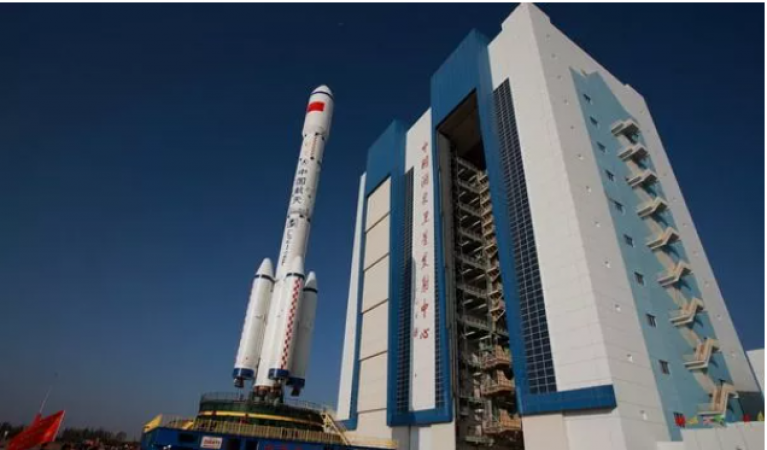
Beijing: The lunar missions planned by China in the upcoming years are intriguing. Weiren Wu, the principal architect of the Chinese Lunar Exploration Programme (CLEP), recently discussed plans to send astronauts to the Moon as early as 2030.
As part of upcoming missions, the nation's ambitious plans for space exploration include testing 3D printing technology on the lunar surface.
"The Chinese people will undoubtedly be able to walk on the moon by the year 2030. That's not a problem, Wu said in a China Media Group (CMG) interview.
Also Read: On May 5, we will witness the first lunar eclipse of the year
After experiencing great success with the first three phases of the CLEP, China is now anticipating beginning the fourth phase. There are four stages to the CLEP program's robotic lunar exploration in total.
China launched Chang'e-1, its first lunar mission, as part of CLEP's initial phase in October 2007. The mission was successful and was purposefully ended in March 2009 by crashing into the Moon.
Another mission, Chang'e-2, which launched in October 2010, was also a part of the initial phase. In order to study the asteroid 4179 Toutatis, this mission's duration was extended. This task was completed in December 2012.
Three missions made up the second phase of CLEP, the first of which was Chang'e-3, a lunar lander and rover. The mission, which launched in December 2013, is still going strong. Queqiao-1, the second mission that was launched in May 2018 with Chang'e-4, which launched in December 2018, was intended to act as a communication link.
Also Read: WhatsApp releases new updates every day; let's look at some of the upcoming updates
The Chang'e-4 spacecraft was a hybrid lunar lander/rover. Yutu-2 was the name of the latter. With this mission, the first controlled soft landing of a spacecraft on the far side of the Moon was accomplished.
Two missions were part of the CLEP third phase. The first was Chang'e-5 T1, which was launched in October 2014. Chang'e-5 T1 was an experimental mission designed to test a number of technologies that would be used on Chang'e-5, a mission to return lunar samples. In November 2020, Chang'e-5 was launched, and this mission returned 1,731 grammes of lunar regolith to Earth.
The fourth and upcoming phase of the CLEP is probably the most intriguing. The Queqiao-2 communication relay satellite, whose launch is scheduled for 2024, will be the first of the four missions that make up the fourth phase. For the remaining missions under the fourth phase, including Chang'e-6, Chang'e-7, and Chang'e-8, Queqiao-2 will perform a similar function to Queqiao-1.
It is anticipated that the Chang'e-6, Chang'e-7, and Chang'e-8 lunar missions will launch in 2024, 2026, and 2028, respectively. The Chang'e-6 mission is intended to return samples from the moon. From the far side of the Moon, it will gather lunar samples and bring them back to Earth. If Chang'e-6 is successful, it will break the previous record for lunar sample return.
The Moon becomes tidally locked as a result of tidal friction, which is brought on by the gravitational pull of the Earth. This indicates that the same side of the moon, which is known as the near side, is always facing Earth. The other side of the Moon, also known as the far side, which is constantly in shadow, is of particular interest to scientists.
The Chang'e-7 mission will go to the south pole of the Moon and is scheduled to launch in 2026. The main objective of the mission would be to search for evidence of water on the south pole of the Moon. There, hopefully, will be water. It would be fantastic news for human survival on the moon if water were ever discovered, according to Wu.
Also Read: Through its LUPEX mission ISRO intends to investigate the lunar dark side
Together with Chang'e-7, Chang'e-8 will lay the foundation for the construction of a lunar research station close to the Moon's south pole.
The purpose of China's lunar base is to aid scientists in improving their understanding of in-situ resource utilisation on the Moon, where future astronauts will be able to directly utilise resources that are present there.
Wu also disclosed that China is "constructing a constellation of satellites around the Moon, a system that can offer communication, navigation, and remote sensing services." After that, Wu said, "we can conduct upcoming deep space exploration."